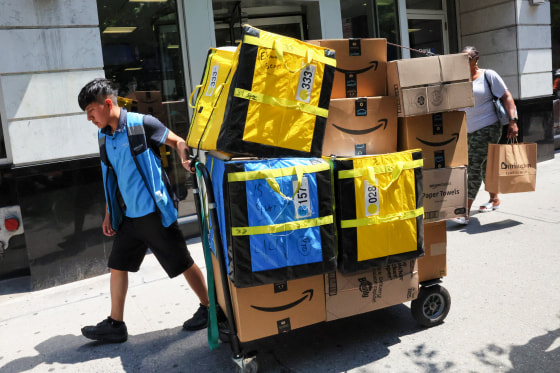The U.S. saw its biggest day of online spending of the year this week as Amazon's 48-hour "Prime Day" sales event kicked off.
Total online sales surpassed $6 billion, up 7.8% from one year ago, according to the Adobe Digital Economy Index, which tracks online sales.
The amount also surpassed last year’s Thanksgiving Day spending, according to the data from Adobe, which said the big spend this week was heavily influenced by the discounts on offer. But this doesn't mean consumers are spending recklessly. They remain price sensitive in the current economic environment.
With inflation levels reaching a four-decade high in June, consumers are hunting for bargains wherever they can get them, said Vivek Pandya, manager of digital insights at Adobe.
Even as prices are rising for everyday necessities like food and gasoline, they are starting to cool off in so-called durable goods like apparel, appliances and electronics. And consumers are noticing.
"Shoppers saw an opportunity to stretch their buying power a little more and do some spending here," Pandya said, referring to the types of consumer goods whose prices have leveled off. "This is very focused on the level of discounting that kicked in around this Prime Day event. Consumers are responding because they have an opportunity to (save)."
Adobe found that, in June, online prices decreased 1% month-over-month. Pandya said that after the early-pandemic buying spree for items like exercise equipment and home office supplies, retailers have been left with larger inventories of those goods as consumers have now shifted some of their spending toward services, like travel.
"Retailers are looking to keep growth going, but with demand starting to draw down a bit, that’s when (they) need to reintroduce discounting to re-incentivize consumers to buy," he said.
Following Wednesday's inflation report, economists at Bank of America said the U.S. is likely to enter a mild recession as consumers pull back on spending. The economists note that spending on services like travel has not been as robust as they hoped.
"Softer spending on goods has been part of our outlook for some time, but weakness in services was a surprise; we had been expecting a rotation in household spending away from goods toward services during re-opening as leading to more robust services outlays," Bank of America said.

